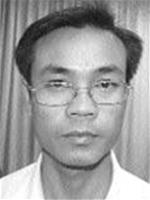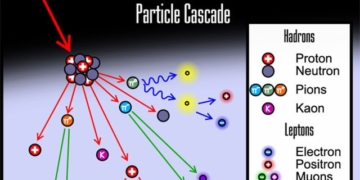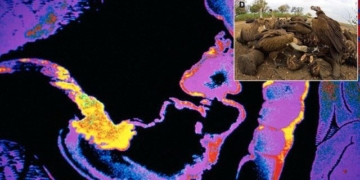A Young Cadre from the Ca Mau Provincial Party Committee Proposes Solutions to Water Pollution in Rural Areas of Ca Mau and Southern Vietnam Caused by Graves Located Too Close to Residential Areas.
|
Mr. Nguyen Dinh Tang |
This initiative won third place in the “Initiatives for Environmental Protection” competition organized by the Ministry of Natural Resources and Environment and the Voice of Vietnam, with awards presented earlier in June.
In the mid-2000s, Mr. Nguyen Dinh Tang, who works at the Propaganda Department of the Ca Mau Provincial Party Committee, returned to pay respects to a deceased friend who had passed away three months prior. His friend was buried in the backyard, and the grave was situated alongside others belonging to family members.
The soil in Ca Mau and the Mekong Delta is primarily clay, which often cracks. Many deep fissures appear due to prolonged drought.
Mr. Tang inquired with the family about ways to prevent the grave from cracking, but they believed it was not an issue, asserting that rain would naturally fill the cracks. Here, graves are typically only dug 1.2 to 1.5 meters deep.
It is unclear whether the shallow burial contributes, but from some of the cracked graves, unpleasant odors have emerged. During the rainy season, water likely seeps down through the cracks before they can be filled with soil, and it remains uncertain how far liquid substances from the graves permeate into the surrounding environment due to the rainwater.
Mr. Tang observed that his friend’s family grave site was less than 50 meters from the house and the water supply for daily use. This practice of burying the deceased near homes is quite common in Ca Mau and neighboring provinces.
“The land is inherited from ancestors,” “the land is a result of self-reclamation.” Therefore, every household has a garden, often reserving a corner for a burial ground.
The deceased are wrapped in fabric and buried in a wooden coffin, with a layer of soil at the bottom. Local types of wood are known to decay quickly, especially during the rainy season in Southern Vietnam from April to November.
In some cases, if burial is delayed, the body may be covered with tea leaves or sawdust. However, these materials do not prevent the leaching of decomposing fluids from the body into the surrounding soil.
No studies have been conducted on the impact of graves located near homes on the quality of drinking water and public health in Ca Mau. It is known that during the dry season, many families use water from ponds or lakes near the graves.
These ponds or lakes are often depressions formed by soil excavation for graves. The water appears clear, but no one knows whether the dissolved substances are safe.
To combat the leaching of pollutants, the propaganda official proposed a series of solutions, such as using plastic or rubber sheets lining or wrapping the coffin.
Another approach suggested was to replicate the cremation model of the Khmer community in Ward I (Ca Mau City) or to use coffins made from composite materials. Composite materials are widely used locally for manufacturing boats, canoes, and even toilets. Preliminary calculations indicate that composite coffins do not allow leaching and cost only a few million VND, making them cheaper than wood.
What is noteworthy about this scientific initiative is that it originates from a non-scientist. The author of the project, who won third place in the “Initiatives for Environmental Protection” competition, stated that he would soon work with the Provincial Department of Natural Resources and Environment to further clarify the feasibility of the initiative.
However, the biggest obstacle to promoting this initiative lies in the very area of communication, which is the primary responsibility of the agency where Mr. Tang works.





















































